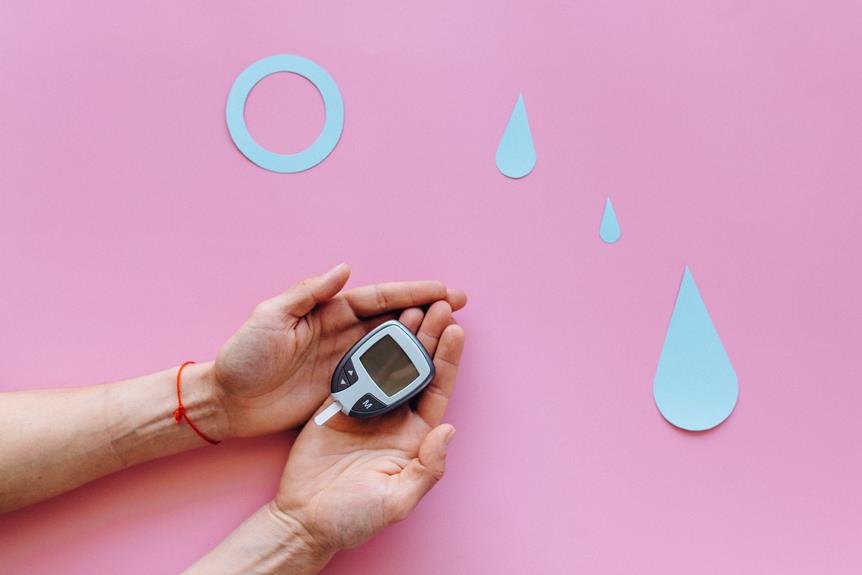The DASH diet presents a highly effective approach to achieving weight loss goals, employing a well-balanced method of eating that has been scientifically proven to deliver results. By placing a strong emphasis on the consumption of a variety of fruits, vegetables, whole grains, lean proteins, and low-fat dairy products, this dietary regimen not only promotes overall health but also facilitates weight loss. Within this discourse, we shall delve into the fundamental principles of the DASH diet and elucidate its role in fostering weight reduction. Moreover, we shall provide guidance on devising a comprehensive meal plan adhering to the DASH diet, as well as integrating physical exercise to optimize outcomes.
Key Takeaways
- The DASH Diet incorporates a variety of nutrient-rich foods into meals.
- The DASH Diet encourages portion control to reduce calorie intake.
- High fiber intake in the DASH Diet keeps you feeling full and prevents overeating.
- The DASH Diet supports a healthy eating plan and prevents cravings.
Key Principles of the DASH Diet
One of the key principles of the DASH Diet is to incorporate a variety of nutrient-rich foods into one’s daily meals. The DASH Diet, which stands for Dietary Approaches to Stop Hypertension, was initially developed to help individuals lower their blood pressure. However, research has shown that it also offers numerous benefits for weight loss and overall health. By emphasizing fruits, vegetables, whole grains, lean proteins, and low-fat dairy products, the DASH Diet provides essential nutrients while limiting saturated fats, cholesterol, and sodium. This combination of foods not only supports weight management but also promotes heart health and reduces the risk of chronic diseases such as diabetes and certain types of cancer. The principles of the DASH Diet provide a solid foundation for a well-rounded and nutritious eating plan.
How the DASH Diet Promotes Weight Loss
The DASH Diet promotes weight loss through its emphasis on nutrient-rich foods and the restriction of saturated fats, cholesterol, and sodium. Here are four ways in which the DASH Diet helps with weight loss:
- Portion control: The DASH Diet encourages portion control, which helps to reduce calorie intake and promote weight loss. By becoming more aware of serving sizes and practicing mindful eating, individuals can better manage their weight.
- High fiber intake: The DASH Diet is rich in fruits, vegetables, and whole grains, all of which are high in fiber. High fiber foods help to keep you feeling full for longer and can prevent overeating, aiding in weight loss.
- Reduced sodium intake: The DASH Diet limits sodium consumption, which can lead to water retention and bloating. By reducing sodium intake, individuals may experience a decrease in water weight, contributing to weight loss.
- Balanced macronutrient distribution: The DASH Diet promotes a balanced distribution of macronutrients, including carbohydrates, protein, and healthy fats. This balanced approach helps to maintain stable blood sugar levels and prevents cravings, making it easier to stick to a healthy eating plan.
By following the DASH Diet, individuals can not only achieve weight loss but also experience the numerous benefits it offers for overall health. To stay motivated on the DASH Diet journey, try these tips:
- Set realistic goals: Break your weight loss journey into smaller, achievable goals to stay motivated and track progress.
- Find support: Join a DASH Diet support group or enlist the help of a friend or family member to stay motivated and accountable.
- Keep a food diary: Tracking your food intake can help you stay on track and identify areas for improvement.
- Focus on non-scale victories: Celebrate achievements that go beyond the number on the scale, such as increased energy levels or improved sleep quality.
Implementing these tips can help individuals stay motivated and achieve successful weight loss on the DASH Diet.
Creating a DASH Diet Meal Plan for Weight Loss
To create a DASH Diet meal plan for weight loss, it is important to consider nutrient-rich foods and portion control. Meal preparation and grocery shopping play a crucial role in ensuring that the meal plan is followed effectively. When it comes to meal preparation, individuals should focus on incorporating a variety of fruits, vegetables, whole grains, lean proteins, and low-fat dairy products. These foods provide essential nutrients while also promoting satiety. It is recommended to plan meals in advance, cook in bulk, and portion out meals for the week to avoid unhealthy food choices. When grocery shopping, it is essential to make a list and stick to it, focusing on fresh produce, whole grains, and low-fat dairy options. By being mindful of meal preparation and grocery shopping, individuals can create a successful DASH Diet meal plan for weight loss.
Incorporating Exercise With the DASH Diet
Regular exercise is a crucial component of the DASH Diet for weight loss, as it helps to enhance the effectiveness of the diet and promote overall health and well-being. Incorporating exercise into the DASH Diet can provide numerous benefits. Here are four key benefits of exercise when combined with the DASH Diet:
- Increased calorie burn: Engaging in physical activity helps to burn calories, which is essential for weight loss. By incorporating exercise into the DASH Diet, individuals can create a calorie deficit and achieve their weight loss goals more effectively.
- Improved cardiovascular health: Exercise, especially aerobic activities like running or cycling, strengthens the heart and improves cardiovascular health. This is important because the DASH Diet also aims to lower blood pressure and reduce the risk of heart disease.
- Enhanced muscle tone and strength: Combining exercise with the DASH Diet helps to build lean muscle mass and improve muscle tone. Strength training exercises, such as weightlifting or bodyweight exercises, can be incorporated to achieve these benefits.
- Increased energy levels: Regular exercise boosts energy levels and reduces fatigue, making it easier to adhere to the DASH Diet and maintain an active lifestyle.
Incorporating exercise into the DASH Diet is essential for achieving weight loss goals and improving overall fitness. By including a variety of exercises in a fitness routine, individuals can maximize the benefits of the DASH Diet and enhance their overall well-being.
Success Stories: Real-Life Weight Loss Results With the DASH Diet
Many individuals have achieved impressive weight loss results with the DASH Diet, showcasing its effectiveness in real-life success stories. It is important to approach these success stories with realistic expectations. While the DASH Diet can be a powerful tool for weight loss, it is not a magic solution. It requires commitment, consistency, and a balanced approach to eating. Maintaining motivation throughout the weight loss journey is also crucial. One key aspect of the DASH Diet that can help with motivation is its focus on a variety of nutritious foods. By incorporating a wide range of fruits, vegetables, whole grains, lean proteins, and low-fat dairy products, individuals can enjoy a satisfying and flavorful diet while still achieving their weight loss goals.
Frequently Asked Questions
Can the DASH Diet Be Customized for Different Dietary Restrictions or Preferences?
Customizing the DASH diet for dietary restrictions is possible by modifying the meal plan to accommodate specific needs. Similarly, individuals can personalize the DASH diet based on their preferences by making substitutions and adjustments to fit their taste and lifestyle.
Is the DASH Diet Suitable for Individuals With Diabetes or High Blood Pressure?
The DASH diet, known for its heart health benefits, is suitable for individuals with diabetes or high blood pressure. It can help manage blood sugar levels and lower blood pressure, promoting overall health.
Are There Any Potential Side Effects or Risks Associated With Following the DASH Diet?
Potential side effects and risks can be associated with following the DASH diet. It is important to note that individual responses may vary, but common side effects include low blood pressure, electrolyte imbalances, and nutrient deficiencies.
Can the DASH Diet Be Effective for Long-Term Weight Loss Maintenance?
The effectiveness of the DASH diet for long-term weight loss maintenance is a topic of interest. However, the challenges of adherence and long term sustainability need to be considered before drawing any conclusions.
How Does the DASH Diet Compare to Other Popular Weight Loss Diets in Terms of Effectiveness?
The effectiveness of the DASH diet in promoting sustainable weight loss is compared to other popular diets, such as the keto diet. Evidence-based research evaluates the benefits and drawbacks of each diet to inform individuals seeking mastery in weight loss strategies.
Conclusion
To summarize, the DASH Diet presents a comprehensive approach to achieving weight loss goals by incorporating wholesome dietary practices and regular physical activity. Its primary focus on reducing sodium consumption and increasing the intake of fruits, vegetables, whole grains, and lean sources of protein has demonstrated effectiveness for numerous individuals. However, it is crucial to bear in mind that no singular diet possesses miraculous properties for weight loss. It is always advisable to seek guidance from a healthcare professional prior to embarking on any novel dietary or exercise regimen. It is worth noting that sustaining long-term weight loss necessitates commitment, consistency, and a holistic perspective.


Leave a Reply